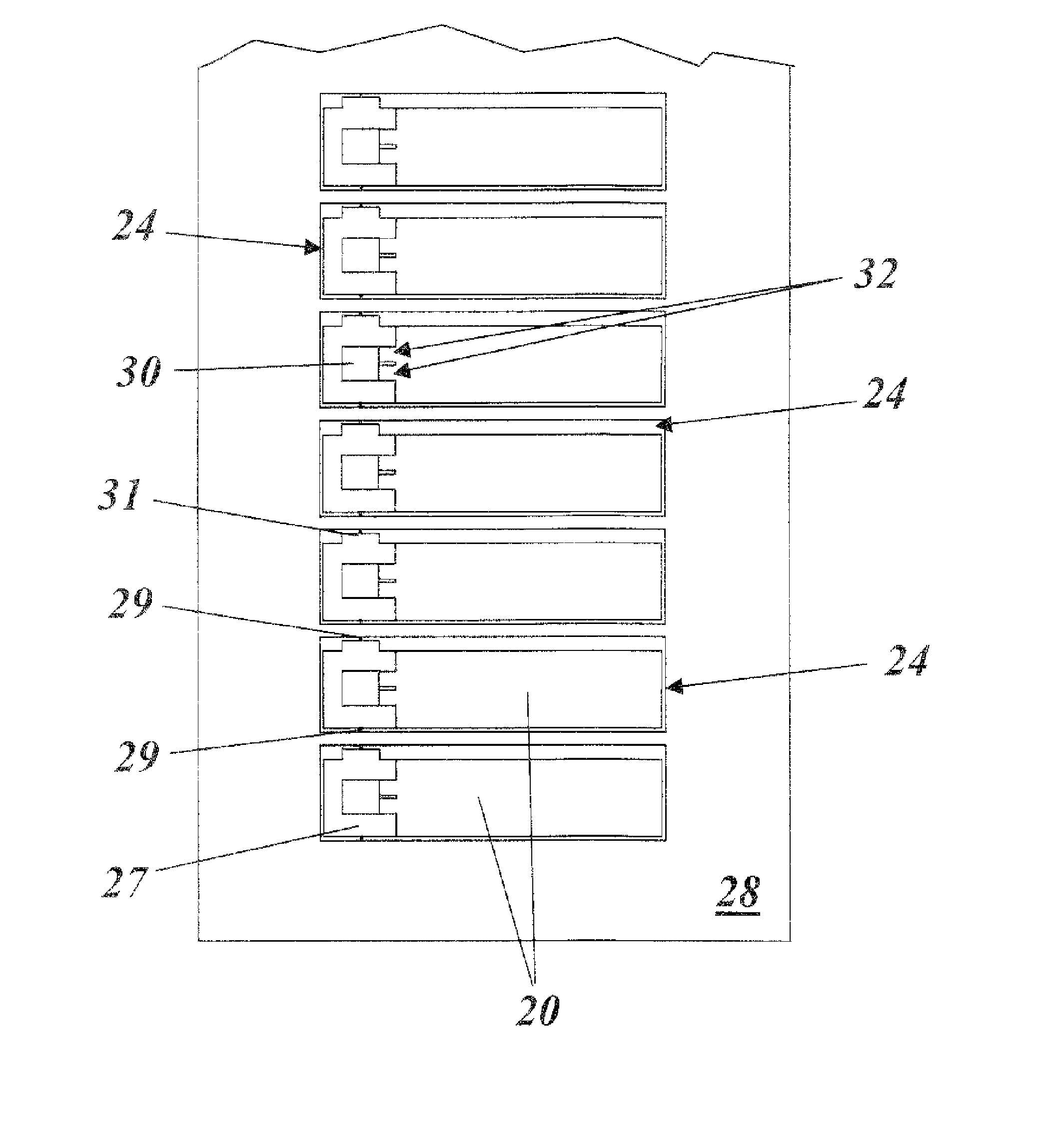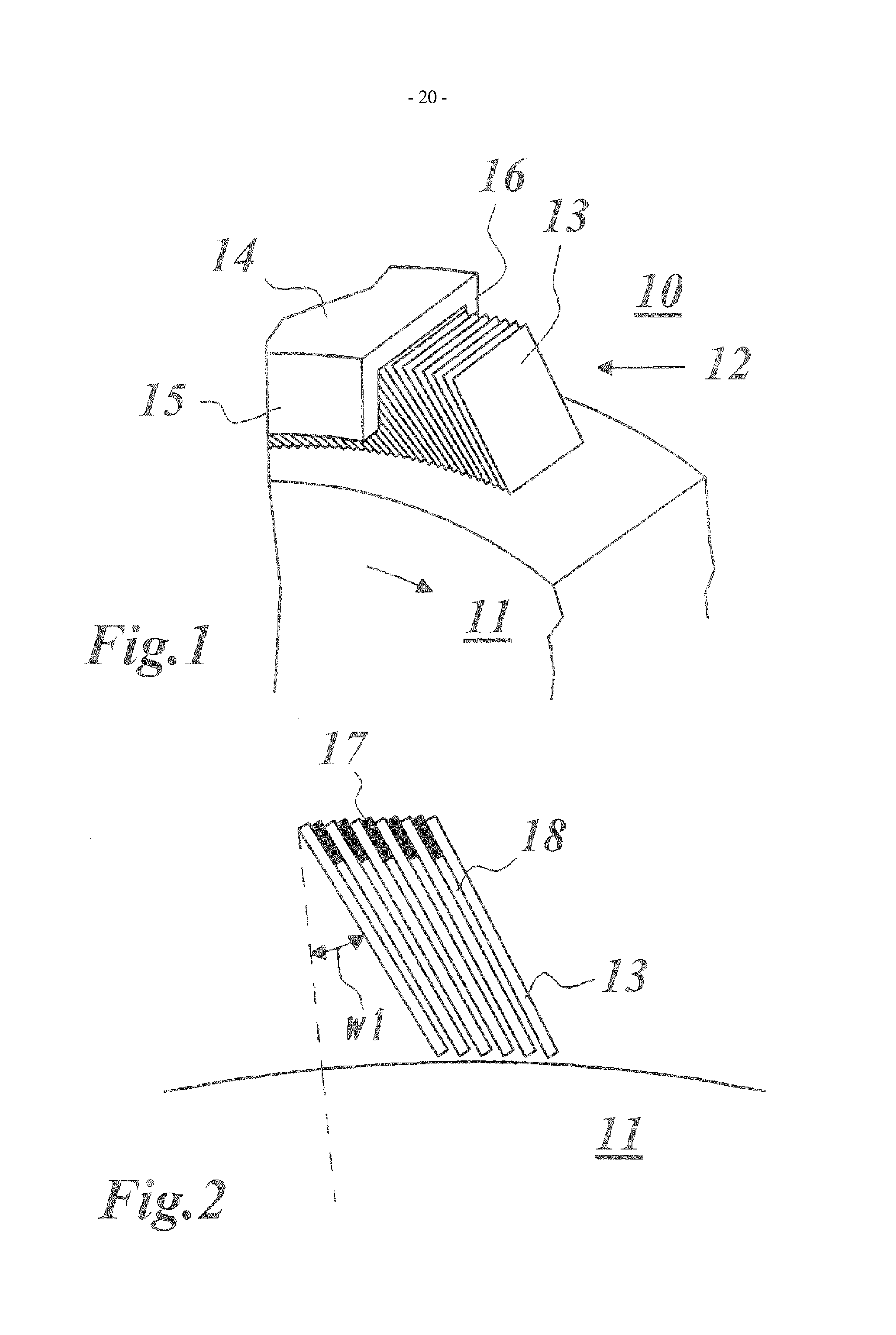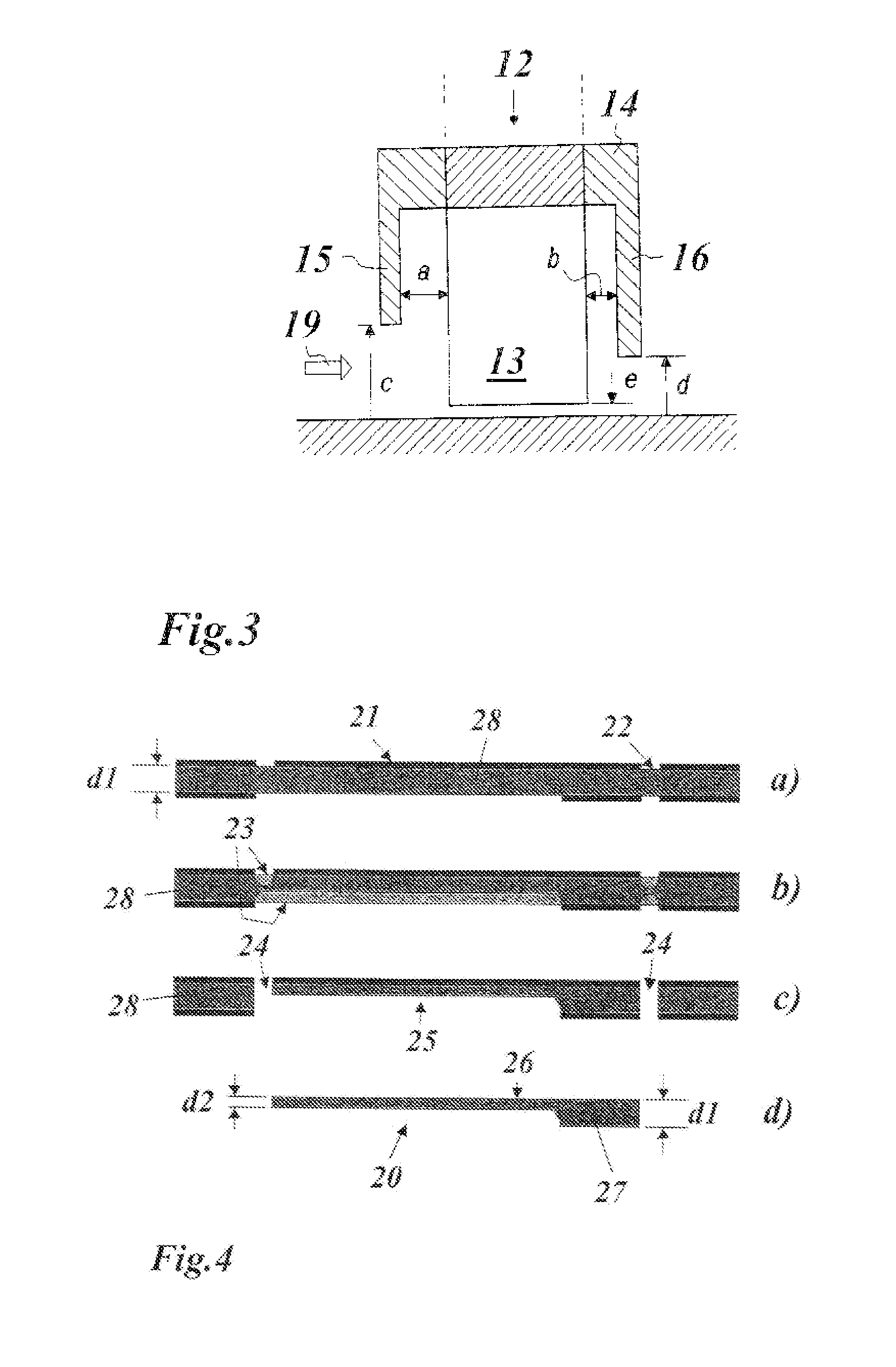Process for producing leaves for leaf seal
- Summary
- Abstract
- Description
- Claims
- Application Information
AI Technical Summary
Benefits of technology
Problems solved by technology
Method used
Image
Examples
Embodiment Construction
[0042]FIG. 1 shows a perspective side view of the typical structure of a leaf seal as used in a gas turbine. The leaf seal 12 seals a rotor shaft 11, which rotates in the direction indicated by an arrow, of the gas turbine 10 with respect to a housing 14. In the annular space between the rotor shaft 11 and the housing 14, a set of thin leaves 13, which are spaced apart from one another at narrow intervals, is arranged in a ring. The surface of the leaves 13 is oriented parallel to the axis of rotation of the machine. In accordance with FIG. 2, the leaves are tilted out of the radial direction through an angle w1 and between them in each case have a narrow gap or space 18, which is preferably defined by spacer elements 17 arranged between the leaves 13. The spacer elements 17 shown in FIG. 2 are illustrated as separate elements. However, they may also be integrated in the leaves.
[0043] In accordance with FIG. 1 and 3, the air flow through the leaves 13 can be altered by using a fron...
PUM
| Property | Measurement | Unit |
|---|---|---|
| Thickness | aaaaa | aaaaa |
| Coefficient of linear thermal expansion | aaaaa | aaaaa |
Abstract
Description
Claims
Application Information
 Login to View More
Login to View More - R&D
- Intellectual Property
- Life Sciences
- Materials
- Tech Scout
- Unparalleled Data Quality
- Higher Quality Content
- 60% Fewer Hallucinations
Browse by: Latest US Patents, China's latest patents, Technical Efficacy Thesaurus, Application Domain, Technology Topic, Popular Technical Reports.
© 2025 PatSnap. All rights reserved.Legal|Privacy policy|Modern Slavery Act Transparency Statement|Sitemap|About US| Contact US: help@patsnap.com



